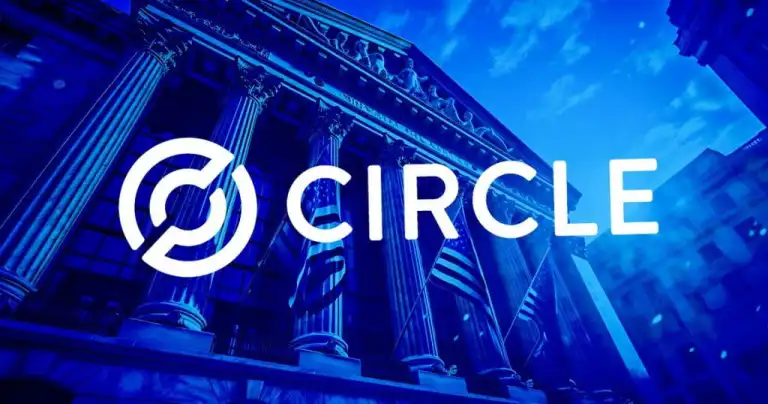-
Circle’s stablecoin payments system provides a fast, low-cost alternative to traditional remittance channels, especially for mobile-first African economies.
-
Strategic partnerships with Flutterwave and Yellow Card make USDC widely accessible, allowing seamless conversions between fiat and stablecoins across borders.
-
While stablecoin adoption grows, regulatory clarity remains essential to balance innovation, compliance, and currency stability in Africa.
Digital assets have rocked the African continent for some decades, with partners like South Africa, Nigeria, and Kenya leading the wave with legal frameworks, amazing startups and now a stablecoin payment system.
According to recent reports, Circle, a prominent African remittance platform, has launched a new payment system with Flutterwave and Yellow Card. This new initiative proposes to rewrite the rules of cross-border finance by the power of stablecoin.
Whether you’re a novice, an investor, or a developer, you can learn how partnerships like Flutterwave USDC integration and Yellow Card stablecoin services are unlocking faster, cheaper and broader transactions.
Africa’s Breakthrough with Circle’s Stablecoin Payment System
How Circle’s New Stablecoin Payment System Works for African Financial Institutions
Best known for its USDC coin, Circle has launched a new stablecoin payments system focusing solely on Africa, the Ciircle Payments Network(CPN). Circle has partnered with leading African Fintechs to connect global and African financial institutions: Flutterwave, YellowCard and Onafriq.
Here’s the rundown of this unique collaboration:
When a user initiates a cross-border transaction through partner institutions (Yellow Card, Flutterwave or Onafriq), the firm collects the user’s corresponding fiat currency and converts it to supported stablecoins.
In addition, Circle’s stablecoin payments systems generate a signed transaction request via its off-chain APIs. This is then broadcast to the blockchain network and processed via the smart contract.
CHECK OUT: What African Developers Must Understand About AI Crypto Token Opportunities
Like most Web3 systems, the smart contract verifies transaction details—recipient identity, wallet address, token type, and amount—before releasing the stablecoins to the receiving financial institution.
The reach of the Circle Payments network partners offers practical applications within Africa. For instance:
- Flutterwave USDC integration enables Nigerian businesses to send funds to Kenya via USDC, bypassing slow banking corridors.
- Yellow Card stablecoin services let users swap naira or rand for USDC almost instantly, cutting out hefty foreign exchange markups.
- A hybrid model combines off-chain APIs and on-chain verification, balancing mobile-first stablecoin payment solutions with stringent compliance checks.
Africa Joins the Global Stablecoin Race
The concept of a Mobile-first stablecoin payments solution is a rapidly growing trend within Africa. It leverages the continent’s high reliance on stablecoins and its mobile penetration rate. In addition, it provides:
- Reduced Transaction Costs: Traditional remitters charge up to 8.46% per transfer. With tiered network and FX fees, USDC-based transfers could land at 1–3%, thanks to optimized USDC remittance solutions.
- Faster Settlement: Instead of waiting hours in line or days for approval, funds arrive in minutes—ideal for arbitrage or urgent payouts.
- Enhanced Compliance: Built-in Travel Rule checks and tamper-proof audit trails lower the risk of frozen or reversed payments, leveraging Circle’s reputation as a secure USDC remittance solution.
For Africa, smartphones will be the primary medium for transactions. This enables users to access Trust Wallet or MetaMask Mobile and cash out locally through Yellow Card’s agent network.
Breaking Down the Partnerships
Leveraging Flutterwave USDC integration for Instant Payouts
One of the few factors that make this initiative different is the choice of Circle Payment network partners. Flutterwave, Africa’s leading exchange, has an API layer that enables USDC on-ramp/off-ramp functionalities.
Its vast market within the continent enables small business traders from Nairobi to Lagos to trade efficiently without waiting for banking windows.

Circle, best known for its USDC is a growing remittance solution in Africa via the stability and strength of USDC.[Photo: Innovation-Village]
Exploring Yellow Card stablecoin services for Local Liquidity
Yellow Card, another African crypto-titan, has vast connections in Nigeria, Ghana, Kenya and South Africa, giving access to their local fiat currency.
With CPN, users can now cash out USDC instantly via the Yellow Card App in their local currency. The on-chain to off-chain flows, from Circle to its smart contract to Yellow Card Walet to cash pickup, demonstrate how Yellow Card stablecoin services streamline the user experience.
With fees as low as 2% (compared to legacy platforms’ 8.46%), Yellow Card’s USDC remittance solutions offer significant cost savings for users.
Broader African Impact
Catalyzing Stablecoin adoption in emerging markets
Stablecoin adoption in emerging markets has been a rising trend, especially in hyper-inflationary economies. In regions like Nigeria, Zimbabwe, Kenya and other African nations, dollar-pegged assets offer an alternative to fluctuating fiat currencies. The role of Circle Payments Network partners is to build trust and liquidity as Africa navigates nascent regulatory enrollments.
The adoption of stablecoins is an issue forcing governments like Nigeria to curb their dependence on them.
As Circle expands CPN, the potential for real-time on-chain stablecoins swaps becomes increasingly promising.
Policy & Regulation Considerations
African regulators—CBN in Nigeria, FIC in Ghana, FSCA in South Africa—are cautiously optimistic. The importance of licensed VASPs and on-chain identity checks cannot be stressed enough as they balance innovation with consumer protection. Programmable compliance checks could streamline audits and slash KYC friction.
Conclusion: Africa’s Web3 Tipping Point
While global players like Circle vie for the continent’s remittance market, strong local partnerships—Circle Payment Network partners Flutterwave and Yellow Card—ensure solutions fit cash-driven, mobile-first economies.
The real question isn’t whether stablecoins will dominate African cross-border payments but whether networks prioritize affordability over profit.
These stablecoin payment systems offer a new look into how best to integrate stablecoins within the continent without destabilizing its fiat currency. They offer a peculiar insight into what the future holds for Africa.


2 comments
[…] CHECK OUT:Africa’s Fintech Trifecta: Circle, Flutterwave & Yellow Card Join Forces […]
[…] CHECK OUT:Africa’s Fintech Trifecta: Circle, Flutterwave, Yellow Card Join Forces […]